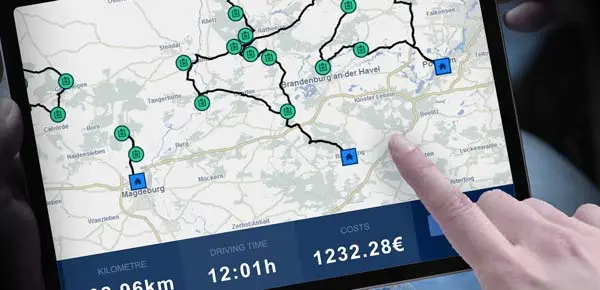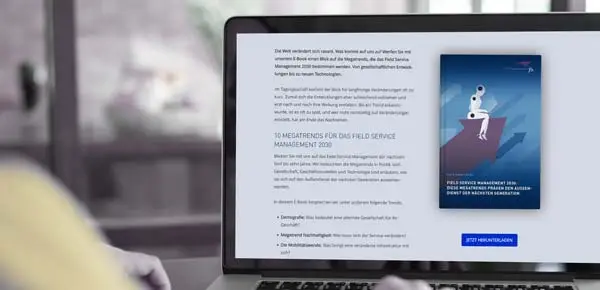
BLOG / SOLUTIONS · INSURANCE INDUSTRY SCHEDULING
INSURANCE EVENTS: REACTING IN REAL TIME
05 November 2021 · James Alex Waldron
How do you apply the principles of reactive scheduling tools against mass loss/damage events?
On 18 January 2018, Storm David (known as Cyclone Friederike in Germany) swept through the UK and across mainland Europe. Friederike, literally meaning 'Peaceful One' resulted in ten deaths and an insured loss of 1.7 billion euros. What began as a low pressure area in the Southern Caribbean took less than a week to grow into a so-called mass loss/damage event.
HOW DO YOU PLAN FOR A CATASTROPHE?
Mass loss events pose major challenges for insurance companies. They go beyond the usual level of claims and create major financial impacts. Insurance companies also refer to this as catastrophe accumulation or accumulation loss.A mass loss event demands an organisational masterstroke from insurers. After all, customers depend on or expect fast and unbureaucratic help, even in a catastrophe. Whilst large insurance organisations may sell policies under a single banner to homeowners, landlords, utilities, (even public service bodies), they operate as separate companies. These accounting divisions are a means to reducing risk, but in reality an insurer will pool their field inspection resources and use a charge back system between divisions.
SCALING IN PROPERTY DAMAGE AREAS
In technical jargon, the financial management mechanism for scenarios arising from natural disasters is called a Large Scale Catastrophe. But how do successful insurance companies manage 'on the day'?In the case of a mass loss event that damages property, loss assessors and technical surveyors must assess damage in person. Using a high level of technical and policy knowledge they plot data points, build summary findings, reports, and presentations. Market leaders earn their position through speed and accuracy and rely on integrated software solutions, including ERP and CRM. For the field, appointment windows and geocoded routes are planned and optimised in a cost-efficient and customer-first way. On the ground, field apps enable live, integrated communication with the head office or dispatchers, as well as text and photographic documentation of the scene. These insurers have the power to re-optimise schedules in-day (no waiting for batch or overnight processing when sending field employees into unquantifiable time frames).
FIELD OFFICES TO PROCESS MASS DAMAGE
In a mass loss event, such as a Storm David's hailstorms with thousands of damaged motor vehicles, the insurance industry know there is a far more economical and agile field process - simply turn the procedure around and set up hyper-local central field offices for damage assessment. Examples include garages and car dealerships where policy holders visit with their vehicles. Dynamic scheduling software solves not only the coordination and best use of experts' skills, but provides optimised appointments (visits) of customers to the site via a portal.These processes work in the background, with an AI-powered system such as FLS VISITOUR offering smart service automation. This makes it possible for customers to plan their appointments themselves on a mobile and desktop aware, branded portal. As in everyday usage, SaaS scalability removes pressure from the dispatch desk. Teams have the tools to invite policy holders by e-mail, text, or interactive, automated call. The days of setting up freephone helplines and working 24/7 are unecessary.
The highlight: All offered appointments are already optimised for the best outcome versus business requirements; and these may be configured as often as necessary, in real time. The tool takes into account, for example, distances and travel times.
IN PRACTICE: FLS VISITOUR
"The fact that the thousands of people affected in the flood regions were helped quickly and the damage was dealt with swiftly was in part, thanks to the extensive presence of our company and the establishment of temporary claims support centres." says the leader of one of Europe's largest insurers, an FLS client.He was in the field for four weeks as the Head of Field Claims. Using FLS VISITOUR routing and embedded workforce planning tools, such as skills and availability, throughout the process, he and his colleagues set up five temporary claims support centres.
"We processed claims within a radius of 100 kilometres from the base," he explains. In one office alone, there were 1,600 cases with damage totalling around 26 million euros. The Company provided rapid assistance: "We were there as soon as the water left. People are in a state of emergency. Quick help is needed, every day counts." So the 50 or so employees and experts at the field claims centres deployed and noted down the mobile phone numbers that some of those affected had written on their front door or fences.
Settlement also involved the logistical feat of bringing together experts, tradespeople, and technical equipment - including a total of 35,000 drying devices - from all over Germany in the shortest possible time. This is only possible because the Company is prepared for mass damage events and can quickly mobilise the necessary resources on a large scale via FLS VISITOUR. Shortly after the flood water had receded, carpenters, painters, roofers and fitters were scheduled to repair the damaged homes.
"To this end, we brought our experts from all over Germany together on site and distributed the processing of all damage evenly across the whole of Germany. And despite the flood, we were able to mobilise a sufficient number of craftspeople and other trades. For example, we mobilised the 35,000 drying machines overnight and had 2,800 houses repaired. "We were able to do this because we have the best scheduling technology linked to the largest tradesperson service in Germany (over 4,000 field operatives). No other insurer offers that."
FLEXIBLE SCHEDULING ON DEMAND
Algorithms are often described as the 'secret weapon' within the insurance industry. Ask 100 people to guess where these sit, and it's likely that risk and fraud management will be the top answer. The PowerOpt algorithm is already operating within the insurance sector, providing 'smart' solutions for efficiency—fuel and CO2 savings, increased SLA adherence, more field appointments in the same day with a better use of resources.We're told that in the future, mass loss and damage events are likely to occur more frequently, and with stronger results—climate change is particularly focussed in international consciousness. Attention must also be paid to the increasing size and scale of city property developments; a higher concentration of dwellings in a smaller footprint increasing the risk of elevated claims. Best practice exists to meet the demand for cloud-based technology, and technical development is continuous. Insurers can offer their customers what they need, even in the worst case scenario; fast and unbureaucratic assistance.
TALK TO FLS ABOUT FIELD SERVICE OPTIMISATION IN THE INSURANCE INDUSTRY
We evaluate your field organisation's process efficiency, planning quality, and cost structure. To gain an understanding of tools to optimise the field experience for your workforce and customers book a short discussion or contact us at info@fastleansmart.com.Read more:
Meet FLS in the Insurance Industry
Cost control: Reactive maintenance with Field Service Management software
Field Service Security with Field Service Safety Software

JAMES ALEX WALDRON
UK Marketing Manager
+44(0) 1183 800189
Send email
James Alex Waldron has worked in written communications for over 15 years. Since 2021, he has written for FLS and the Solvares Group on the topics of digital field service transformation and mobile workforce management, and regularly provides insight to the industry press.





